With the hot weather rolling on from yesterdays peak above 9,000MW in Queensland, it was not really a surprise to see Scheduled Demand top 9,000MW again today – as noted in the sequence of NEM-Watch snapshots below:
The earliest snapshot I gathered was the following one at 09:00 this morning – at which time the demand was already nudging 8,000MW after some pretty unpleasant overnight temperatures:
By 10:30 we saw demand above 8,000MW:
By 12:20 we see demand a few 100MWs higher at 8,419MW – and (as noted in the image below) we see solar injections for the day maxed out, and about to begin their daily decline.
Because of the outstanding success of the 44c FIT and the way the RET works, we’ve incentivised 400,000 QLD residents (like me) to install panels facing north to maximise kWh harvest – but it does have the very unfortunate side-effect of tailing off from relatively early in the day at the same time as air-conditioning load continues to ramp up. A lesson in being very sure of the outcome we want when designing policies like that…
At 16:35 we noted the warning trigger for Low IRPM (Instantaneous Reserve Plant Margin) for the Queensland “Economic Island”. In layman’s terms, a tight supply-demand balance by virtue of both:
- the weather-induced afternoon air-conditioning load at work and at home; and
- the decline of solar PV injections as the sun drops (but the heat stays) into the afternoon.
This was captured in the following snapshot, which also shows the Scheduled Demand at 9,015MW.
As tweeted with the 16:45 snapshot, the dispatch price finally spiked as high as the Market Price Cap ($14,000/MWh) off the back of high demand, fading (afternoon) solar PV injections, and overall tight supply/demand balance:
As noted on this snapshot, the Scheduled Demand Target at 9,056MW was only 102MW shy of the record set on 1st February 2016. At 16:50 demand stepped higher to 9,071MW (not shown here). By 17:05 it had climbed further to 9,088MW – only 70MW lower than the all-time record:
At the time of posting (17:30) this was the highest level of demand seen today…
With the growth in upstream compression load for LNG exports, it was expected that we’ll see a new peak demand this summer. Stay tuned on WattClarity for more…


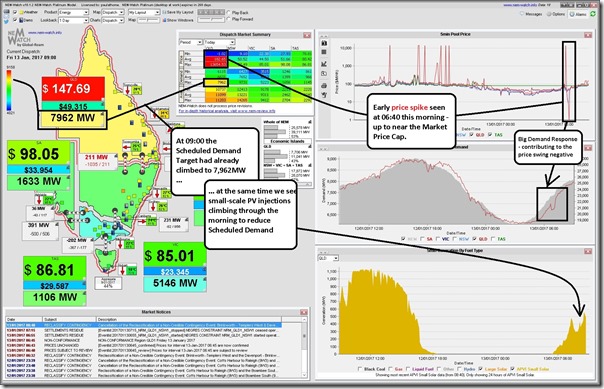
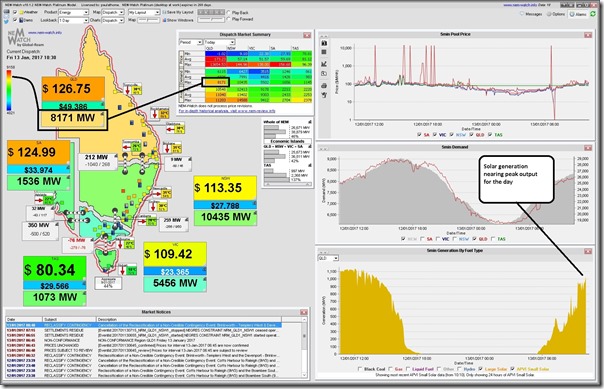
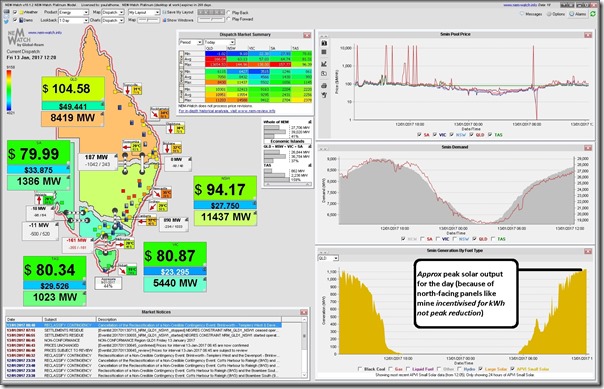
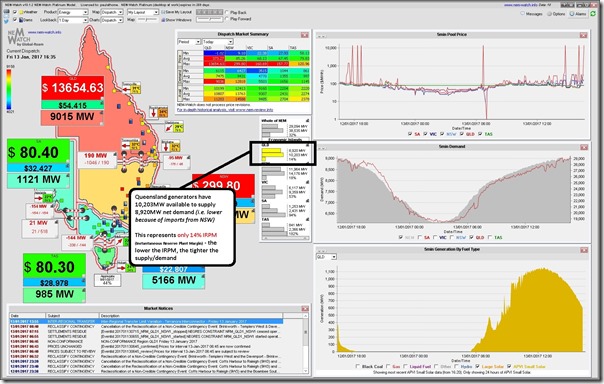
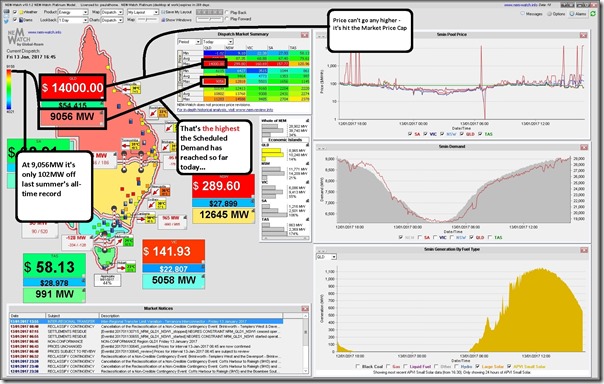
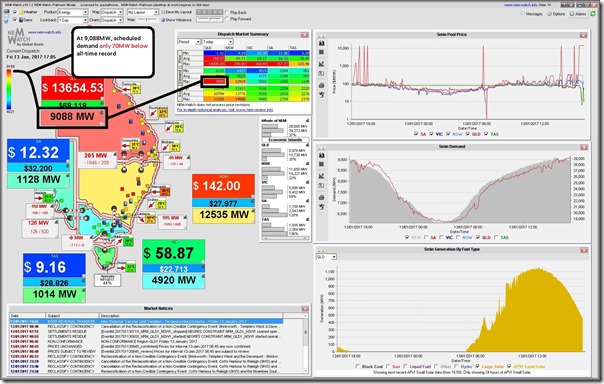
Leave a comment